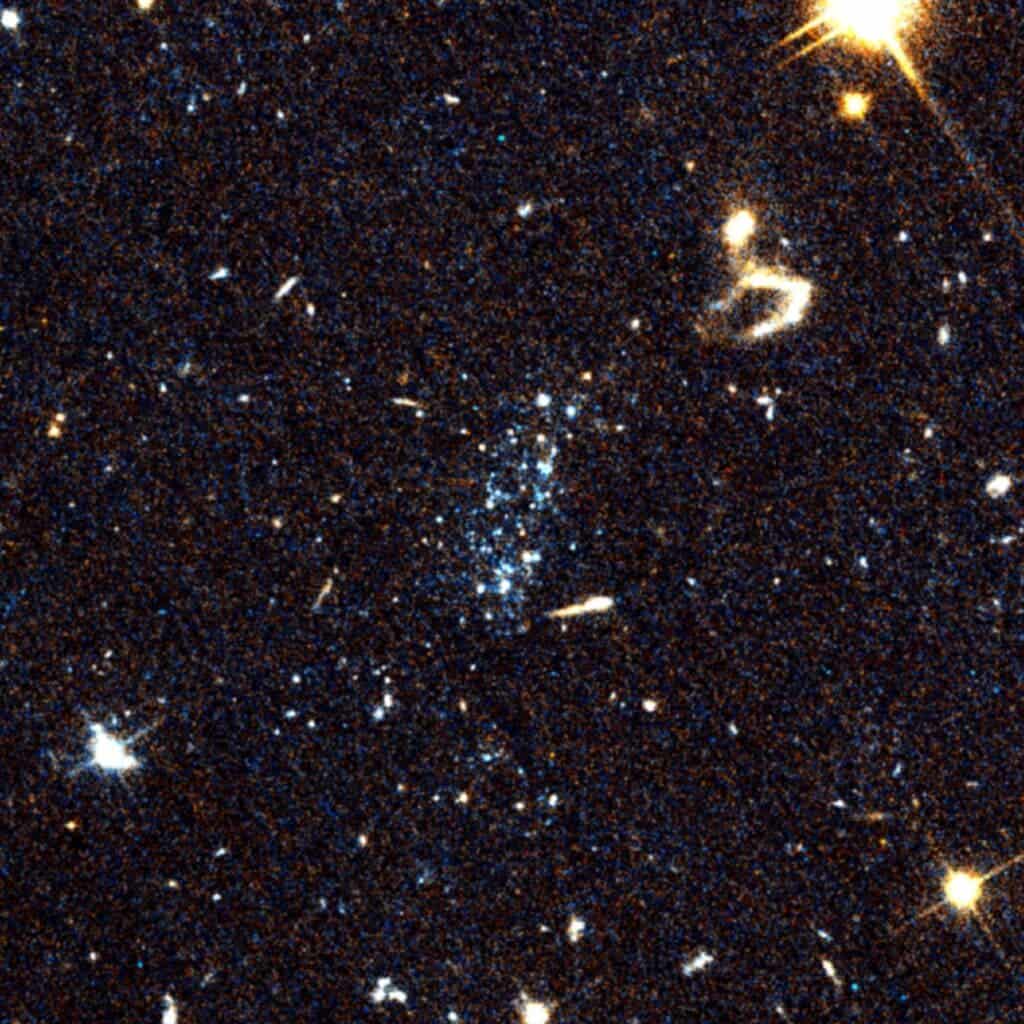
Astronomers at the University of Arizona have discovered five systems belonging to a never-before-seen type of star system. They are a bit puzzling because they aren’t quite galaxies, and they only exist on their own.
Only young, blue stars are found in the new stellar systems, which are arranged in an erratic pattern and appear to reside in unexpected isolation from any probable parent galaxy.
The star systems, which astronomers say appear as “blue blobs” through a telescope and are around the size of small dwarf galaxies, are found within the nearby Virgo galaxy cluster. In some cases, the five systems are separated by more than 300,000 light-years, making it difficult to determine their parents.
The astronomers discovered the new galaxies after another research team, led by the Netherlands Institute for Radio Astronomy, created a database of surrounding gas clouds which provided a list of possible new galaxies’ locations. Following the publication of that catalog, various research organizations began searching for stars that might be linked to those gas clouds.
The clouds were believed to be related to our own galaxy, and most of them likely are, but when the first gathering of stars, known as SECCO1, was discovered, astronomers recognized it was in the Virgo cluster, which is much farther away but still extremely close in the scale of the universe.
SECCO1 was one of the very unusual blobs said Michael Jones, a postdoctoral fellow in the University of Arizona’s Steward Observatory and lead author of the study.
“It’s a lesson in the unexpected,” Jones said. “When you’re looking for things, you’re not necessarily going to find the thing you’re looking for, but you might find something else very interesting.”
Using the Hubble Space Telescope, the Very Large Array telescope in New Mexico, and the Very Large Telescope in Chile, the scientists discovered that the majority of the stars in each system are very blue and young, with very little atomic hydrogen gas. This is significant because stars are formed from atomic hydrogen gas, which evolves into thick clouds of molecular hydrogen gas before developing into stars.
“We observed that most of the systems lack atomic gas, but that doesn’t mean there isn’t molecular gas,” Jones said. “In fact, there must be some molecular gas because they are still forming stars. The existence of mostly young stars and little gas signals that these systems must have lost their gas recently.”
The paucity of older stars in the systems, as well as the combination of blue stars and a lack of gas, was surprising. Older stars, referred to as “red and dead” by astronomers, can be found in most galaxies.
“Stars that are born red are lower mass and therefore live longer than blue stars, which burn fast and die young, so old red stars are usually the last ones left living,” Jones said. “And they’re dead because they don’t have any more gas with which to form new stars. These blue stars are like an oasis in the desert, basically.”
The abundance of metals in the new star systems suggests how they may have evolved.
“To astronomers, metals are any element heavier than helium,” Jones said. “This tells us that these stellar systems formed from gas that was stripped from a big galaxy, because how metals are built up is by many repeated episodes of star formation, and you only really get that in a big galaxy.”
There are two basic methods for removing gas from a galaxy. The first is tidal stripping, which occurs when two large galaxies pass close together and tear gas and stars away gravitationally. The alternative method is called ram pressure stripping, the preferred method in this scenario.
“This is like if you belly flop into a swimming pool,” Jones said. “When a galaxy belly flops into a cluster that is full of hot gas, then its gas gets forced out behind it. That’s the mechanism that we think we’re seeing here to create these objects.”
The researchers favor the ram pressure stripping hypothesis because the blue blobs must have been moving very quickly to get as isolated as they are, and tidal stripping is far slower than ram pressure stripping.
Astronomers predict one day these systems to split off into distinct star clusters and spread out across the bigger galactic cluster.
What researchers have learned feeds into the larger “story of recycling of gas and stars in the universe,” said UA associate astronomy professor David Sand. “We think that this belly-flopping process changes a lot of spiral galaxies into elliptical galaxies on some level, so learning more about the general process teaches us more about galaxy formation.”
The findings were presented at the 240th American Astronomical Society meeting in Pasadena, California.


